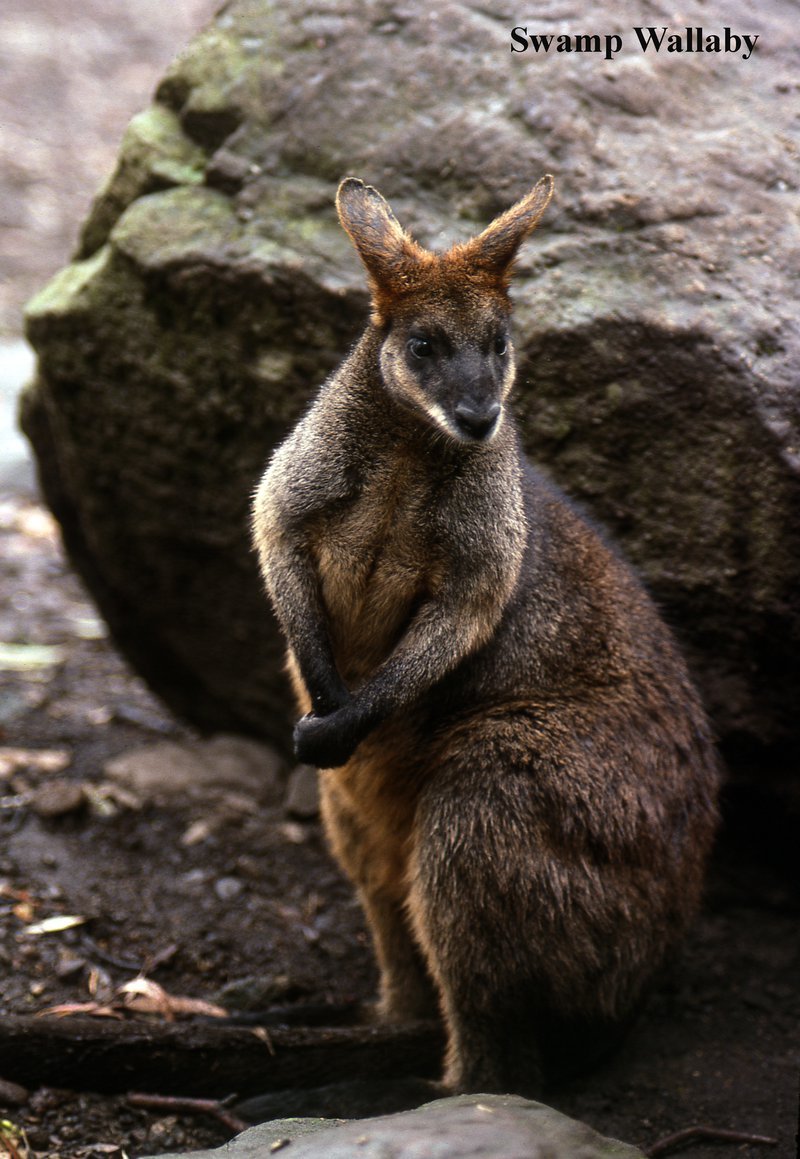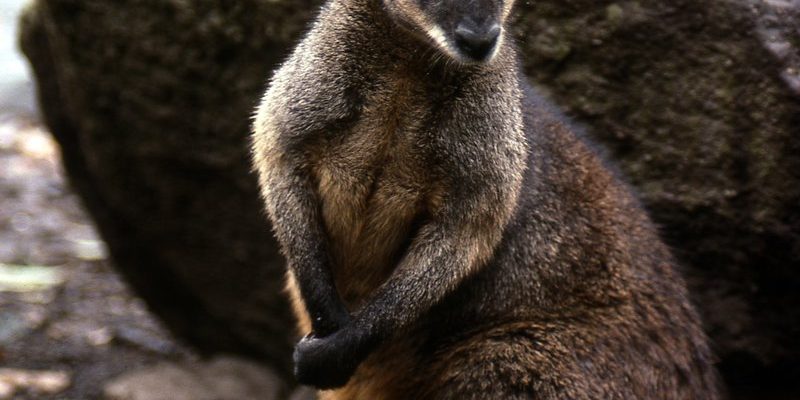
Swamp wallabies are native to eastern Australia and parts of New Guinea. As part of the macropod family, which also includes kangaroos and koalas, they are primarily herbivores. While they generally keep to themselves and avoid confrontation, there could be situations where a swamp wallaby might react defensively. So, what should you know about their behavior, potential threats, and encounters? Let’s dive deeper into the world of swamp wallabies and uncover the facts.
Understanding Swamp Wallaby Behavior
Swamp wallabies are known for their shy and solitary nature. They tend to thrive in wooded areas and prefer to forage alone during dawn and dusk. Picture someone who’d rather enjoy a quiet evening at home than a loud party—that’s pretty much the swamp wallaby vibe. They primarily munch on grasses, leaves, and herbs, making their diet quite simple and straightforward.
These animals are generally not aggressive and don’t seek out human interaction. However, their defensive instincts kick in if they feel threatened. Imagine how you might react if someone invaded your personal space—swamp wallabies can feel the same way. They might thump their feet or even show a threatening posture, which is their way of saying, “Back off!”
It’s essential to respect their territory. If you come upon a swamp wallaby in the wild, keeping a safe distance is best. Observing them quietly is not only a safer option for you, but it also keeps the wallaby from feeling stressed or cornered.
Are They Ever Aggressive?
You might be wondering if swamp wallabies have ever shown aggression towards humans. The truth is, while rare, it can happen under certain circumstances. Just like with many wild animals, a cornered or injured swamp wallaby might lash out in panic. Their powerful hind legs can deliver a strong kick, which could potentially cause serious injury.
In most cases, they are more likely to flee than fight. If they perceive you as a threat, they’ll typically hop away. Think of it like a game of tag; if someone’s too close for comfort, the instinct is to run! This flight response is a survival mechanism that helps them stay safe from predators.
If you ever encounter one in the wild, maintaining a respectful distance and allowing the animal to move away will keep both you and the wallaby safe. It’s crucial to remember that they are wild animals and should be treated as such.
Common Scenarios of Human-Wallaby Interaction
Let’s explore a few situations where humans and swamp wallabies might interact. Understanding these scenarios can help clarify any misconceptions about their danger level.
- Feeding: Some people may try to feed swamp wallabies, thinking it’s harmless. However, this can be dangerous. Feeding can lead to aggressive behavior, as the animals may begin to associate humans with food and approach too closely.
- Being Cornered: If a swamp wallaby feels trapped, its natural instinct to protect itself will kick in. This could happen in areas where they are not used to human presence, such as rural or less-populated regions.
- Road Encounters: Swamp wallabies often wander onto roads, posing a risk of collision. Drivers should be cautious in areas where these animals are prevalent, especially at dawn and dusk when they are most active.
In these scenarios, it’s clear that both humans and swamp wallabies can coexist peacefully if we respect boundaries and act responsibly.
What To Do If You Encounter One
So, what should you do if you stumble across a swamp wallaby? Here are some practical tips to ensure both your safety and that of the wallaby:
1. Stay Calm: Whatever you do, don’t panic. Swamp wallabies can sense fear, which may cause them to act defensively.
2. Give Space: Back away slowly and give them plenty of room to escape. Remember, they have a strong flight response and will likely hop away if they feel safe.
3. Avoid Feeding: It’s tempting to offer food, but resist the urge. This can create a dangerous association between humans and food for wallabies.
4. Observe from Afar: If you’re lucky enough to see one, enjoy the moment! Watching from a safe distance can be a beautiful experience.
These steps can help ensure a peaceful encounter, turning a potentially dangerous situation into a memorable wildlife experience.
Final Thoughts on Swamp Wallabies
In summary, swamp wallabies are fascinating creatures that generally don’t pose a threat to humans. Their instinct is to avoid confrontation, and they are often more scared of us than we are of them. However, like any wild animal, they can react unpredictably if they feel threatened or cornered.
To enjoy a safe and respectful interaction with these animals, remember to keep your distance and observe them in their natural habitat. By understanding their behavior and respecting their space, you can appreciate the beauty of swamp wallabies without fear. So next time you’re out in the bush and see one of these adorable wallabies, you’ll know exactly what to do!

